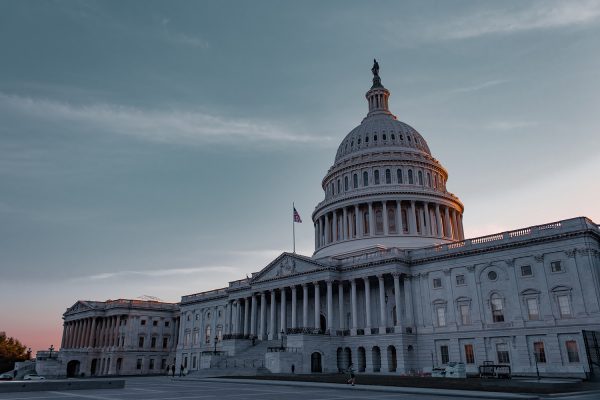
Lee Drutman, a political scientist, argues in The Atlantic that America has become the rigid two-party system its founders feared.
The authors of America’s Constitution wanted to make it impossible for a partisan majority to ever unite and take control of the government, which it could then use to oppress the minority.
The fragile consent of the governed would break down, and violence and authoritarianism would follow. This was how previous republics had fallen into civil wars and the Framers were intent on learning from history, not repeating its mistakes.
They separated powers across competing institutions to prevent any one faction from dominating others. But they did not plan for the emergence of political parties, let alone just two parties.
Big tents
For most of America’s history, Drutman argues, the system still worked because the parties weren’t homogenous or very ideological. Bargaining and coalition-building took place within the two parties as well as between them.
The parties operated as loose, big-tent coalitions of state and local parties, which made it hard to agree on much at a national level.
Into the late twentieth century, there were liberal Democrats and conservative Republicans alongside liberal Republicans and conservative Democrats. America had something of a four-party system.
Three things changed that:
- The nationalization of politics, aided by mass media and later the Internet.
- The sorting of urban college graduates and ethnic and sexual minorities in the Democratic Party and exurban and mostly white voters in the Republican Party.
- Elections being decided by ever smaller margins.
As a consequence, primaries, not general elections, now often determine who wins in a congressional district or state and both parties seek an elusive permanent majority rather than compromise.
This breaks the system of separation of powers and checks and balances the Founders created:
Under unified government, congressional co-partisans have no incentive to check the president; their electoral success is tied to his success and popularity. Under divided government, congressional opposition partisans have no incentive to work with the president; their electoral success is tied to his failure and unpopularity. This is not a system of bargaining and compromise, but one of capitulation and stonewalling.
In the absence of a functional Congress, the presidency has become more and more powerful. More and more decisions that should be made by politicians are delegated to the courts, which have become politicized as a result.
Solutions
None of this will sound unfamiliar to readers of the Atlantic Sentinel. I’ve argued that Congress is broken and that the courts in the United States have become too powerful.
Drutman’s solution is the same as mine: switch to a multiparty system.
He points out that nothing in the Constitution requires a two-party system. Nothing requires the country to hold winner-takes-all elections. States can decide their own rules and Congress has the power to intervene; a power it has used in the past to enforce the very plurality-winner single-member districts that keep the duopoly in place and ensure that most elections are uncompetitive.
If the country wanted to, it could move to a system of proportional representation for the very next congressional election. All it would take is an act of Congress. States could also act on their own.
Options include multi-member congressional districts, ranked-choice voting and French-style runoffs. All would allow third parties to thrive without playing spoiler and encourage politicians to appeal to the center rather than to the extreme wings of their parties.
Taking judicial appointments out of the hands of politicians (in most other democracies, judges appoint their own) could help depoliticize the judiciary and take the sting out of the culture war the two-party system sustains.
Shifting power to more populous states would help shrink the rural-urban divide — another cleavage of the culture war — and reintroduce political competition in coastal cities.
Changing the composition of the Senate would probably be the last, and certainly not the first, step in such a transition, but this would be another argument for multi-member congressional districts, which do not require constitutional reform.
If the Electoral College, which currently gives an unfair advantage to sparsely populated states, cannot be abolished, it could be expanded to more accurately reflect where Americans live. There is no constitutional limit on its size.
Drutman knows multiparty democracy isn’t perfect either.
But it is far superior in supporting the diversity, bargaining and compromise that the Framers … designed America’s institutions around, and which they saw as essential to the fragile experiment of self-government.

Wearing masks has become a point of political divide between the two parties splitting our country. Although political beliefs can determine America’s view of masks there are other factors that play a role in their stance on face coverings. The fact that nobody likes wearing masks has led to weaponization and made the divide even greater. People don’t want masks to disrupt their normal lives so they have decided that mask wearing is unnecessary and ineffective. Rather than working together to face this issue, people are causing it to become very political. This is one topic of controversy that has added to the political divide in America and is strengthening the two-party system. In order to achieve a less divisive America, we have to become less radical and more tolerant of other ideas.